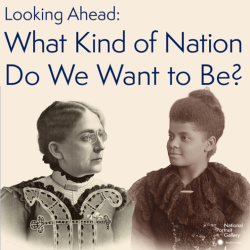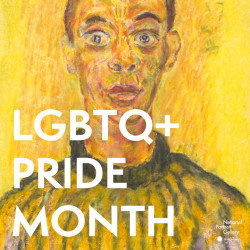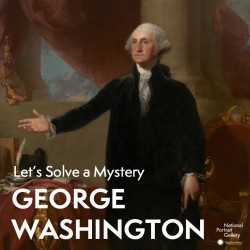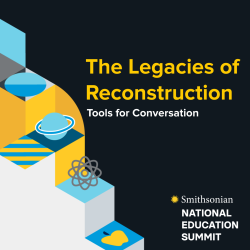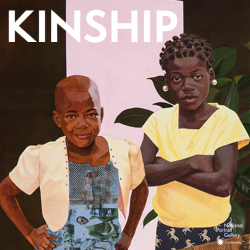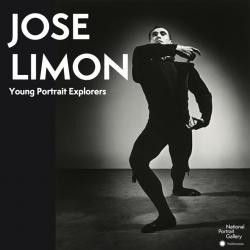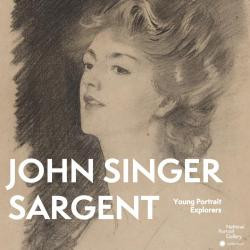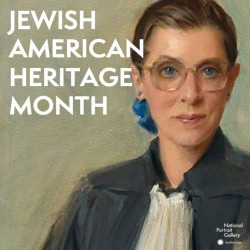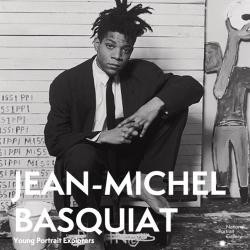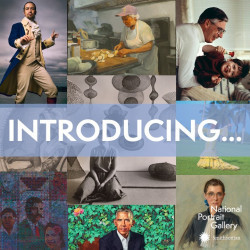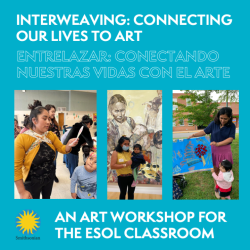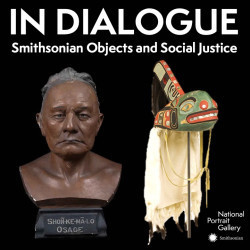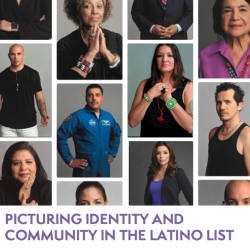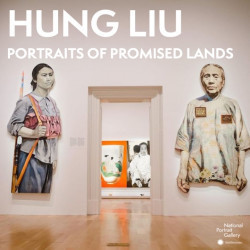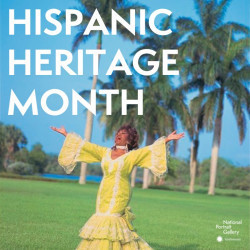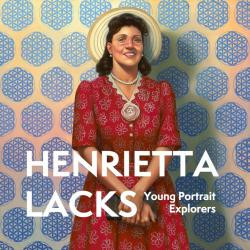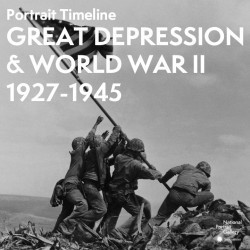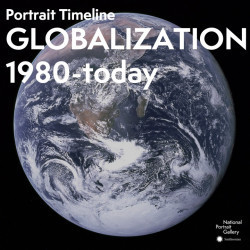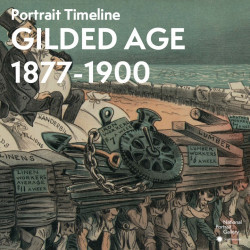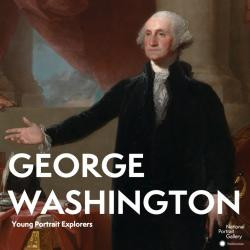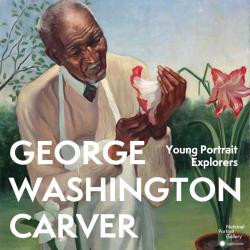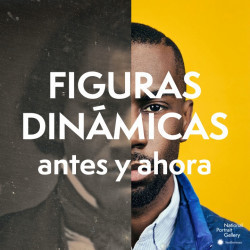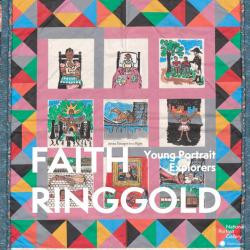Nicole Vance Nash's collections
Looking Ahead: What Kind of Nation Do We Want to Be?
<p>How can the past inform our future? Imagine you are living in the U.S. in 1899. In this era of rapid expansion and increasing tensions many Americans are asking "what kind of nation do we want to be?" Across the United States, people are talking about what that means for themselves and for their country. For this lesson, students will imagine they are gathered in an issue forum. This guide is meant to provide a framework for student deliberation by offering three approaches to the complex question: "what kind of nation do we want to be?" Each option is accompanied by possible actions to be taken and notes possible drawbacks.</p>
<p>#NPGteach</p>
 Nicole Vance Nash
Nicole Vance Nash
18
LGBTQ+ Pride Month with the National Portrait Gallery
<p>Meet the LGBTQ+ pioneers who shaped the history, development, and culture of the United States of America. Use this collection to celebrate LGBTQ+Pride Month, LGBTQ+ History Month, and embrace LGBTQ+ voices in the classroom year round. This collection reflects the history of portraiture in the United States- we recognize that who is represented and how one is represented reflects the country's flaws as well as it's strengths.</p>
<p>#NPGteach</p>
 Nicole Vance Nash
Nicole Vance Nash
134
Let's Solve a Mystery: George Washington
<p>Follow the clues to uncover the mysteries of the Lansdowne portrait at the Smithsonian's National Portrait Gallery. Each correct answer will help you learn something about George Washington and the portrait!</p>
<p>#NPGteach</p>
 Nicole Vance Nash
Nicole Vance Nash
11
John Singer Sargent: Young Portrait Explorers
<p>Discover the artwork of John Singer Sargent (1856–1925) and learn about some of the techniques he used for drawing portraits.</p>
<p>#NPGteach</p>
<p><strong>Keywords:</strong> John Singer Sargent, Shading, Charcoal, Shades, Highlighting, Strokes, Portraits, Drawing</p>
 Nicole Vance Nash
Nicole Vance Nash
33
Jewish American Heritage Month with the National Portrait Gallery
<p>Meet the Jewish Americans who shaped the history, development, and culture of the United States of America. Use this collection to celebrate Jewish Heritage Month and embrace Jewish voices in the classroom year round.<em> </em>This collection features some but not all portraits of Jewish American sitters found in the National Portrait Gallery's permanent collection. <em>Please note that the sitters in this collection are American citizens who are Jewish whether by culture, ethnicity, or religion. </em></p>
<p>#NPGteach<br></p>
 Nicole Vance Nash
Nicole Vance Nash
236
Jean-Michel Basquiat: Young Portrait Explorers
<p>Learn about symbols in art and explore the symbolism in Jean-Michel Basquiat’s work.</p>
<p><br>#NPGteach </p>
 Nicole Vance Nash
Nicole Vance Nash
22
Identity and Community in The Latino List
<p>This collection explores portraits from photographer Timothy Greenfield-Sanders's <a href="https://npg.si.edu/portraits/collection-search?edan_local=1&edan_q=Latino%2BList&" title="https://npg.si.edu/portraits/collection-search?edan_local=1&edan_q=Latino%2BList&" target="_blank" data-msys-clicktrack="0" rel="nofollow noopener noreferrer">The Latino List</a> using the following strategies: Strike a Pose; Same, Different, Connect, Engage; Seek to See; and Lenses.</p>
<p>This collection is part of the the National Portrait Gallery's Classroom Conversations Series. Classroom Conversations is a virtual teacher workshop series that uses portraiture to explore topics and themes related to history and heritage months throughout the school year.<br></p>
 Nicole Vance Nash
Nicole Vance Nash
42
Hung Liu: Portraits of Promised Lands
<p>Explore portraits from "Hung Liu: Portraits of Promised Lands" at the Smithsonian's National Portrait Gallery in this Learning Lab collection.<br></p>
<p>Hung Liu (1948–2021) was a contemporary Chinese-born American artist, whose multilayered paintings established new frameworks for understanding portraiture in relation to time, memory, and history. Often sourcing her subjects from photographs, Liu elevated overlooked individuals by amplifying the stories of those who have historically been invisible or unheard. Having lived through war, political revolution, exile, and displacement, she offered a complex picture of an Asian Pacific American experience. Her portraits speak powerfully to those seeking a better life, in the United States and elsewhere. <em>Hung Liu: Portraits of Promised Lands</em> will be first major exhibition of the artist's work on the East Coast. This is also the first time that a museum will focus on Liu’s portraiture.</p>
<p><em>The story of America as a destination for the homeless and hungry of the world is not only a myth. It is a story of desperation, of sadness, of uncertainty, of leaving your home. It is also a story of determination, and—more than anything—of hope.</em></p>
<p>— Hung Liu, 2017</p>
<p><em></em>"Hung Liu: Portraits of Promised Lands" will be on view at the National Portrait Gallery August 27, 2021, through May 30, 2022</p>
<p>Keywords: Hung Liu, Chinese-American, AAPI, Cultural Revolution, China, Portraits, Portraiture, Family, Mother, Father, Daughter, Son, Gender, Refugees, Immigration, Identification, Identity, Displacement, War, Asian Pacific American, Painting, Photography, Memory, Migration, Dorothea Lange, Carrie Mae Weems</p>
 Nicole Vance Nash
Nicole Vance Nash
57
Hispanic Heritage Month with the National Portrait Gallery
<p>Meet the Hispanic Americans who shaped the history, development, and culture of the United States of America. Use this collection to celebrate Hispanic Heritage Month and embrace Hispanic voices in the classroom year round.<br></p>
<p>#NPGteach</p>
<p><strong>Keywords: </strong>Portraits, Hispanic Heritage Month, Latinx History Month, Latina, Latino, Afro-Latino, Puerto Rican, Nuyorican, Chicana, Chicano, Scientists, Writers, Artists, Musicians, Actors, Activists, Government</p>
 Nicole Vance Nash
Nicole Vance Nash
215
Gilded Age (1877-1900) with the National Portrait Gallery
<p>This portrait timeline spotlights individuals who shaped the history, development, and culture of what is now the United States of America between the years 1877 and 1900.</p>
<p>#NPGteach</p>
<p>Keywords: Gilded Age, Progressive Era, Industrial Revolution, <a>Wounded Knee-Massacre</a>, <a>Monopoly, Depression of 1893, Muckrakers, Social Darwinism, Suffrage, Temperance</a><br></p>
 Nicole Vance Nash
Nicole Vance Nash
51
George Washington: Young Portrait Explorers
<p>Learn about the first president of the United States, George Washington.</p>
<p>#NPGteach</p>
<p><strong>Keywords:</strong> George Washington, President, Executive Branch, Revolutionary War</p>
 Nicole Vance Nash
Nicole Vance Nash
28
George Washington Carver: Young Portrait Explorers
<p>Discover this portrait of George Washington Carver, and use your five senses to learn about his job as a scientist, inventor, and teacher.</p>
<p>#NPGteach</p>
<p><strong>Keywords:</strong> George Washington Carver, five senses, scientist, agriculture, botany, inventor, teacher</p>
 Nicole Vance Nash
Nicole Vance Nash
42

